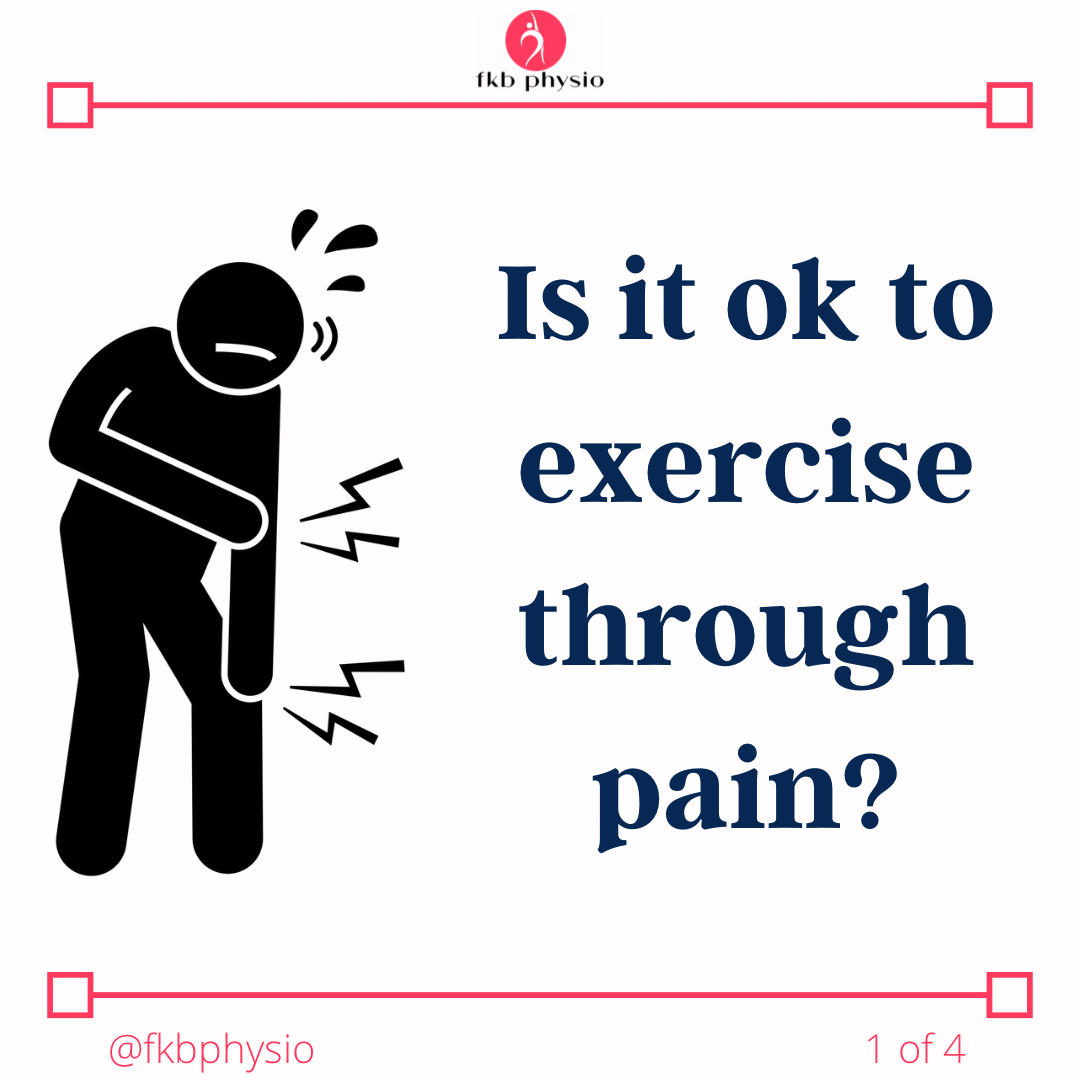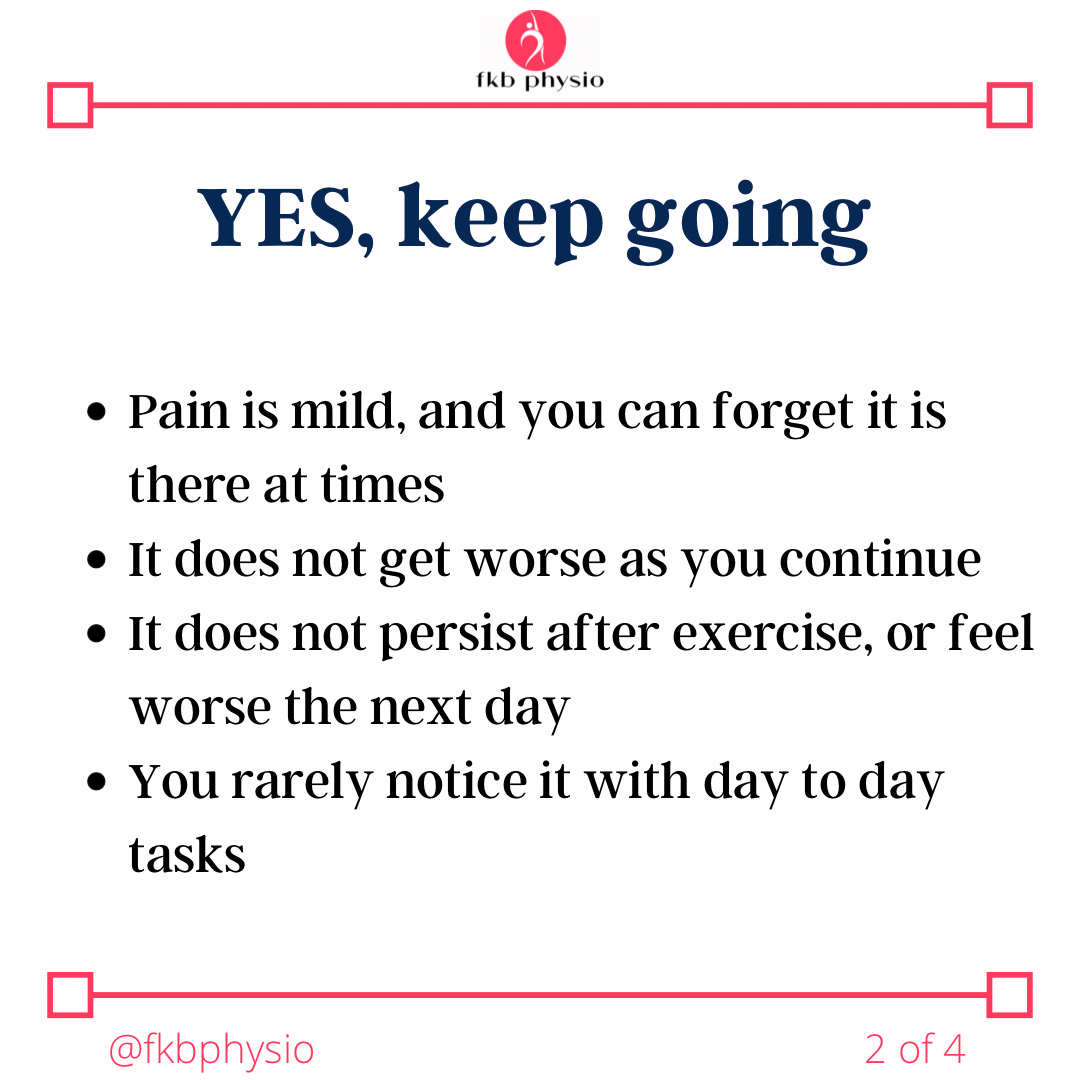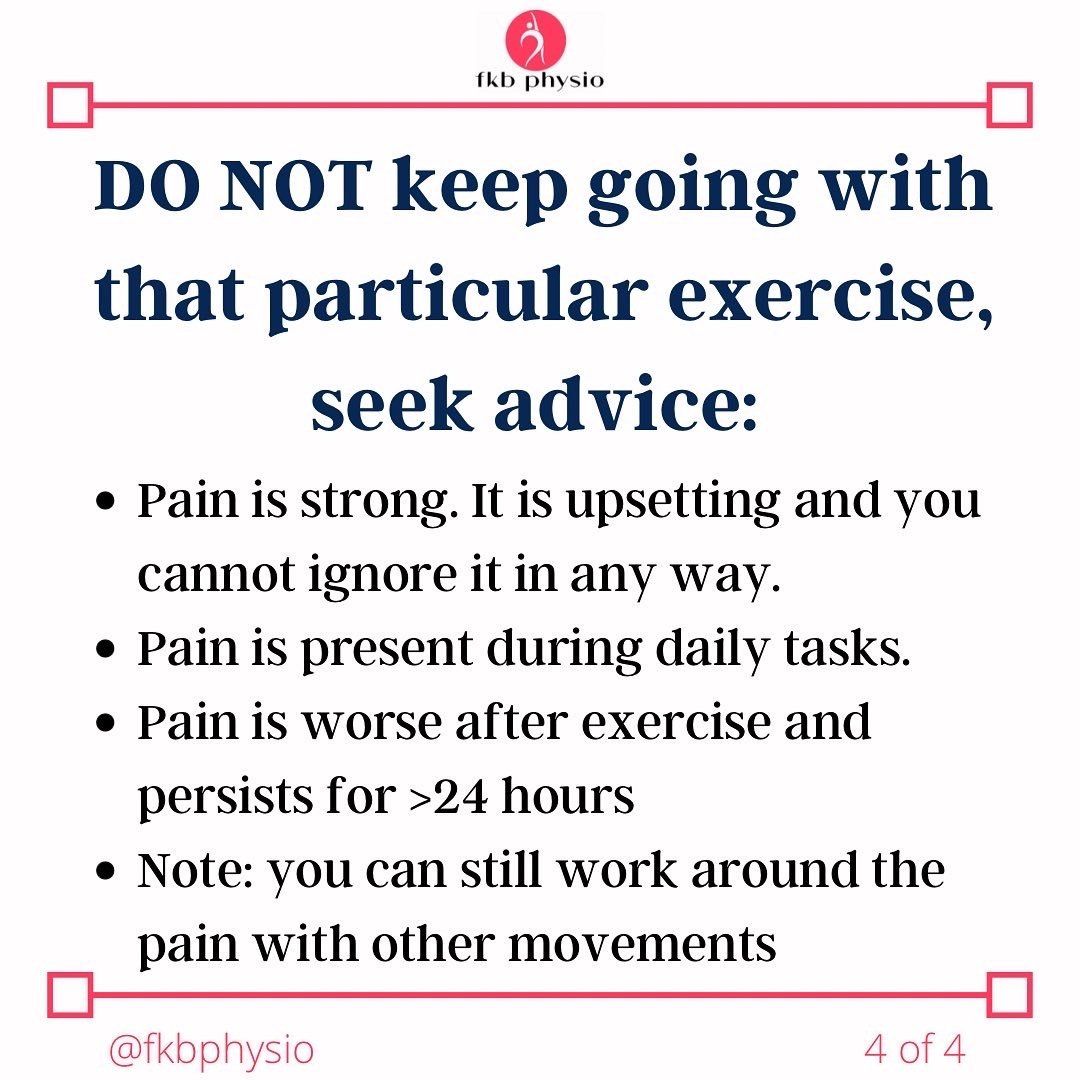Should you rest if you have an injury? Or push through some pain?
Something that comes up a lot during my physio consultations for someone in pain or for people in my group classes who may develop a niggle is this.
If you have pain, should you rest it, or work through it?
The idea that you need to rest if you are injured or in pain is a bit of an outdated one.
In my opinion, the idea of resting an injury is an incomplete sentence:
You need to relatively rest the injured area, temporarily, and then as soon as possible, gradually re-load it again.
Too often, people see a healthcare professional and are told to ‘rest’ - an ambiguous term with no real direction.
It is often taken quite literally, and the person may reduce their activity levels significantly for a couple of weeks, only to find they keep getting re-injured every time they try to get back into their old routine.
At the worst, this can lead people to giving up an activity altogether, thinking they are just “too old” for that now, or that their body just “isn’t suited to it” (unfortunately, ideas often perpetuated by clinicians they have seen).
The idea that if you just rest an injury it will heal is flawed. The tissues that are damaged may heal, but they also will lack the capacity to tolerate loading and use like they did before - firstly because they have suffered an injury, and secondly because there has been no specific work to restore them to their original capacity (or beyond, as the injury likely happened for a reason).
On the other side of the coin, there are also patients I see who have had an injury niggling away for months and months but have never actually tried reducing the frequency or intensity of the painful activity.
I get the logic - you want to be able to run, it hurts when you run, stopping running would be giving in and not really fixing the problem, so you haven’t tried it. But no amount of corrective exercise/ massages/ dry needling sessions will do anything if there’s a problem there that is triggered by load. Reducing that particular activity slightly, just so that you can tolerate the movement without flaring up symptoms, can be helpful.
Of course, it also depends on a few other factors, so here is a bit of a list of things to consider:
- Whether the pain is made noticeably worse with use, and feels better with rest. (Usually a sign some form of load adjustment has to be made).
- The actual diagnosis. Some things need offloading. Other things don’t.
- How new or old the pain is. Newer and more acute pains or injuries are more likely to need some initial off-loading.
- How severe the pain is - see the infographics below.
- If you have been avoiding use of the injured part and it isn't getting better, it is likely to need increased use and there may be some discomfort associated with this that may be part of the process (this is an art!).
Some other things to consider:
- If you need to pull back a bit, do not stop completely. There should be a way you can keep doing SOMETHING, as close as possible to ‘the thing’.
- Avoid ‘the thing’ for the SHORTEST period possible and gradually get back to it as soon as possible.
- Avoiding movement for a long time causes lots of problems, and can make non-painful and non-threatening movements start to hurt.
- Your body becomes sensitive the longer a pain is present, and it can make pain signals become less trustworthy the longer you have been in pain.
- Pain does not always equal damage, particularly once it has been persistent for a long time.
- Loading an injured body part early can help the tissues to rebuild more effectively and more quickly than if you offload it, particularly in an area that is used to being loaded a lot (e.g. your lower limbs).
Of course, this can be really hard to figure out on your own, which is where my role as a physiotherapist steps in!
This is particularly true as I know people are often worried that they will cause permanent damage if they keep working through a pain. I actually think ‘permanent’ damage is extremely hard to do.
If you injure a tissue in your body, it can heal again. Pushing through pain may make something take longer to get better, but it is very rarely going to do anything irreparable. The human body is pretty good at getting on with things.
So much more I could say, but that can wait for the next blog!
Hopefully this has been informative and helpful and something you can consider next time a pain crops up.
Please note: though I am a physiotherapist, none of this is intended to be taken as personalised medical advice, and is intended to be generically educational in nature.





